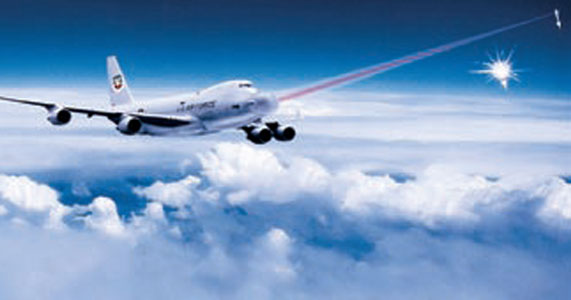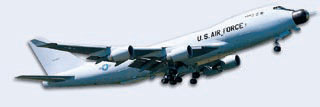Laser Plane Closer to Missile Kill

Washington. Boeing and its associates are getting closer to killing missiles with lasers while in flight.
A program to develop a massive missile-killing laser housed in a 747 freighter celebrated another milestone last month with a successful test of its fire control and tracking system on a simulated target, the Boeing Company announced.
The Airborne Laser program a joint venture between defense giants Boeing, Lockheed Martin and Northrop Grumman – identified, tracked and fired a low-powered laser at a reflector attached to an NC 135E Big Crow research aircraft during tests that ended August 23, one of the final hurdles before a live fire “lethal demonstration†is conducted in 2009.
“The program remains on track to complete a lethal demonstration in 2009 that will validate the unique contribution ABL can bring to an integrated ballistic missile defense system as a boost phase element,†said Greg Hyslop, Boeing program manager for ABL during a Sept. 4 telephone interview.“We stand on the verge of fully demonstrating a revolutionary war fighting capability – the ability to defend ourselves and our friends and allies with light.â€
The ABL aircraft is expected to be operational in the alter part of the next decade but before 2020, Boeing officials have indicated.
But while program officials are touting their latest test and previewing the big event to come in 2009, the ABL program remains in budgetary limbo. Congressional defense authorizers slashed the 2008 ABL budget by about $250 million, a cut that would in effect delay the shoot down test by two years.
One of the factors that surely weigh on lawmakers as they allocate funds for a wide range of defense projects – including billions for the expansion of the Army and Marine Corps, new Air Force fighters and Navy ships – is the ABL’s strategic level sticker price.At an estimated $1.5 billion per aircraft, a seven plane squadron comes at a hefty price for a capability that many see as extremely controversial.
 The laser plane includes a “megawatt class†high-energy chemical laser designed to shoot down missiles by targeting their fuel tanks, taking advantage of pressure and velocity to “unzip†the rocket, rendering it powerless during its initial flight.
The laser plane includes a “megawatt class†high-energy chemical laser designed to shoot down missiles by targeting their fuel tanks, taking advantage of pressure and velocity to “unzip†the rocket, rendering it powerless during its initial flight.
“The internal pressure and aerodynamic forces, once the wall is weakened, is what actually destroys the missile,†Hyslop explained.
Officials say systems for handling the chemicals that are used to re-arm the laser have proven safe, helping encourage reluctant governments such as Japan make the case for potential basing of ABLs in their soil.
Though the Air Force is planning for a single squadron of ABL planes, program officials explained that a detailed concept of operations is still in the works. Hyslop said the ABL’s powerful beam could be turned against a wide variety of targets, including ones on the ground.
“ABL could be used in that mode,†Hyslop said. “We don’t have the sensing capabilities to find a target on the ground, but if we were given target coordinates we could obviously fire the laser at a point on the ground.â€
With the completion of the fire control test last month, program officials are ready to install the missile-killing, high-energy laser aboard the 747 test aircraft – a process akin to “building a ship in a bottle†– with eventual ground tests of the laser next fall.
By the beginning of 2009, program officials say they’ll flight test the ABL, firing the laser at “instrumented targets,†possibly including drones, with a final missile-kill test in August 2009.
“The issue of putting a beam on the target was always a huge risk in the program,†admitted Art Napolitano, ABL program manager with Lockheed Martin.
“This building block approach has allowed us to demonstrate to everybody that technically this is a very viable weapon.â€
It may be noted that the laser weapon programmer was conceived as part of what is called the Star War programmer of the US government during President Ronald Reagan’s time.





